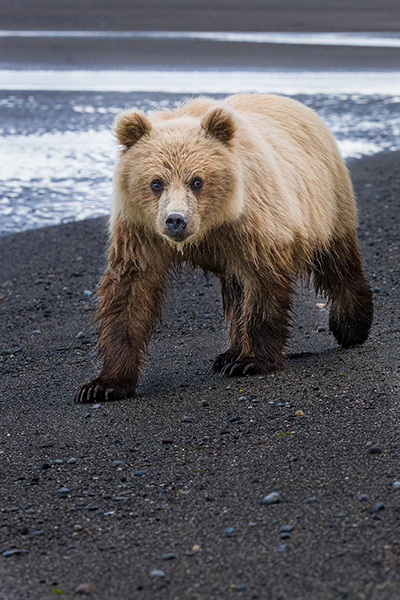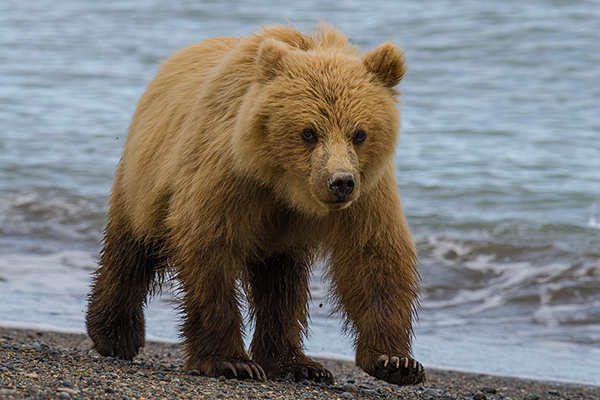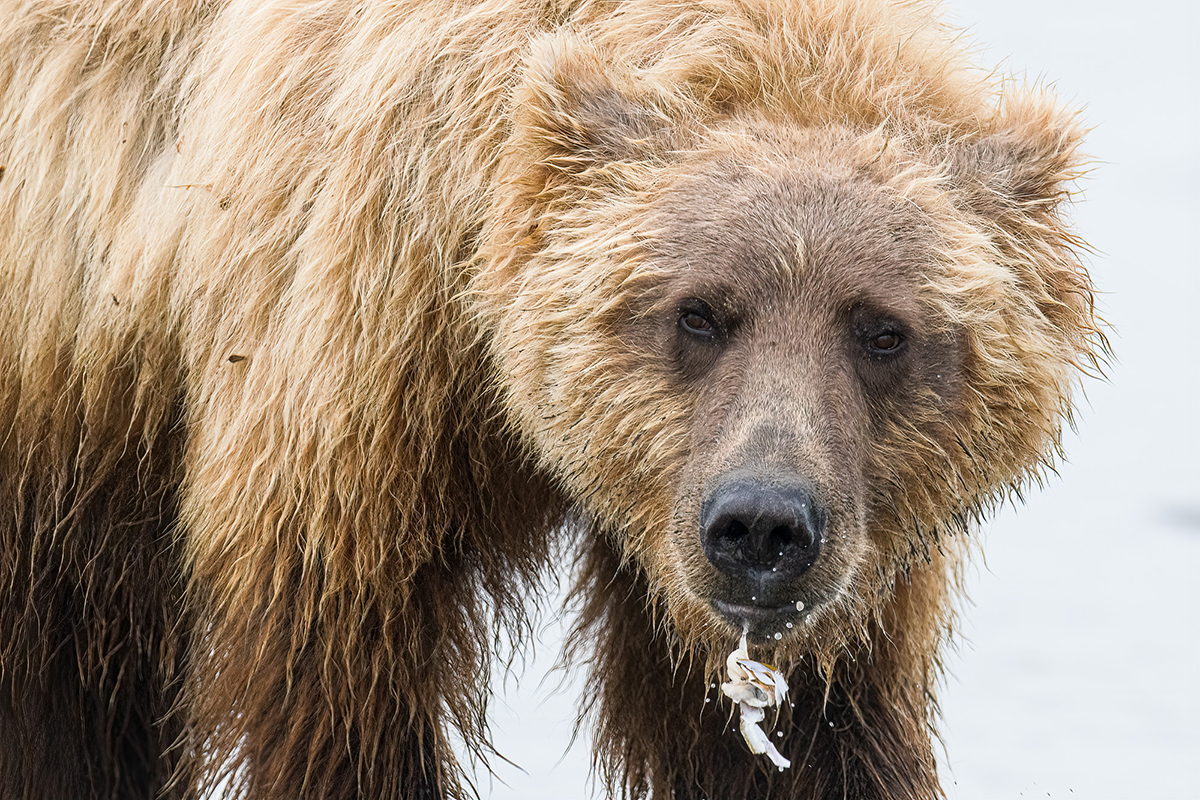How to Photograph: Alaskan Bear Country
Lewis Kemper explores Lake Clark National Park’s famous furry residents with his Tamron SP 150-600mm VC G2 zoom lens.
More Photo Tips | Video Gallery | Photo Gallery | Enewsletter sign-up
By Jenn Gidman
Images by Lewis Kemper
Lake Clark National Park, located about 100 miles from Anchorage in southwest Alaska, is, according to its own website, “unlike any park you've experienced.” A key part of that experience, particularly for wildlife photographers, are the coastal brown bears that congregate in the park’s meadows and along its shorelines.
Lewis Kemper has been leading bear photography workshops at the park for a decade, were he’s been able to get closer to these fascinating creatures than in any other park or preserve. “We skipped last year due to COVID, but I was back again this August, taking more photos of the bears grazing, playing, feeding, and clamming in their natural environment,” he says. “On this trip, I had the Tamron SP 150-600mm VC G2 lens by my side, which is ideal for this type of wildlife photography.”

150-600mm (550mm), F/13, 1/640th sec., ISO 5600
Click image to view larger

150-600mm (550mm), F/10, 1/640th sec., ISO 2000
Click image to view larger
In addition to the reach of the lens, which allows Lewis to stay out of the bears’ way, the VC image stabilization feature allows him to shoot handheld. “The 150-600 offers me the flexibility to get down low to the bear’s level, then move around as the bear does,” he says. “With this lens, I’m able to achieve sharp images without having to go too high on the shutter speeds or ISOs.”
Lewis and his workshop participants stay at the Silver Salmon Creek Lodge, then head out each day in an ATV with a bear guide. “We sit in a trailer pulled by the quad, which the driver takes to all the prime bear-watching spots—usually in the meadows there or by Cook Inlet,” he says. “Unlike some parks, where you can’t get out of the ATVs, it’s relatively safe to do so at Lake Clark.”
The lodge is open from about mid-June till sometime in September, which is after the bears have come out of their winter hibernation and during feeding season in preparation for the upcoming winter. “There are three distinct seasons during that time,” Lewis explains. “In the beginning part, in June, the first brave bears emerge from the woods and start poking around. At that time, their main diet is mostly tidal grass. Then in July, they’ll typically start clamming, and by the end of August, they’re starting to go after the salmon as the fish leave Cook Inlet and head up Silver Salmon Creek.”

150-600mm (600mm), F/9, 1/640th sec., ISO 800
Click image to view larger

150-600mm (450mm), F/11, 1/640th sec., ISO 900
Click image to view larger
A day of bear-watching in the park is a full one. Lewis and his team head out around sunrise, go back for breakfast around 8 a.m., then head back out until lunchtime. After lunch, it’s several more hours of picture-taking until dinner, and sometimes the group will even sneak in a few photos after that final meal. “Because we’re allowed to get out of the ATVs here, you can end up being 25 feet or closer to the bears,” he says. “In the one photo you see here of the bears sparring, which I shot at 150mm, they couldn’t have been more than 15 or 20 feet away. They’re very acclimated to humans.”

150-600mm (150mm), F/9, 1/640th sec., ISO 500
Click image to view larger
Bears tend to be solitary creatures, offering Lewis ample opportunity to focus on their individual behavior and expressions. Most of the interaction Lewis does see comes from within family groups. “Usually that means a mother bear and her cubs, or siblings playing,” he says. “Occasionally you’ll get bears that aren’t related who will come close enough to tolerate each other, but they don’t often intermingle. Cubs are more prone to do that, but when they do, the mother bear usually summons them back after a short time.”

150-600mm (550mm), F/13, 1/640th sec., ISO 7200
Click image to view larger
With the 150-600, Lewis is able to create a variety of compositions to showcase his days in the park. “I can zoom out to show the bear in its habitat, or I can pull in close to fill the frame,” he says. “And then I can zoom back out again if the bear suddenly stands up from a sitting position. Having that flexibility as the bears move around with such a versatile zoom lens is a big advantage. Sometimes I’ll carry a second camera body with me with a wider-angle lens on it, but I find I don’t really use it that much.”
Lewis has a few tips for photographers thinking of embarking on a bear-themed workshop or tour. “First, with big lenses, people tend to shoot wide open, but I always tell my students to stop down so you get that depth-of-field from the front of the bear to the back of the bear,” he says. “I also recommend they set their cameras on manual and use auto ISO. Shutter speed is going to be your biggest consideration, especially as the bears move around and do things like come out of the water and shake their heads—you don’t want a big blur of fur in your image. You typically want to be at least at F/10.”

150-600mm (180mm), F/10, 1/640th sec., ISO 3600
Click image to view larger

150-600mm (460mm), F/14, 1/640th sec., ISO 1100
Click image to view larger
Seeking out new angles and perspectives is also key. “I also encourage my workshop participants, when they know they’re in a safe position—and we always let our own participants know when it’s safe—that it’s OK to deviate from taking pictures at eye level,” Lewis says. “Get lower, even sitting on the ground if you can, to capture photos from the bears’ vantage point.”
Don’t forget to pay attention to the bears’ behavior to get a sense of how they act (and react) and to capture their personal relationships and quirky moments. “I love when I’m able to get a photo of a mama bear with her cubs, for instance,” Lewis says. “Watch the bears long enough and you’ll start to anticipate some of that behavior. It’s also fun when they totally surprise you. I couldn’t have planned for that bear sprawled over the log, but I was ready with my 150-600 when that moment happened.”

150-600mm (600mm), F/8, 1/640th sec., ISO 800
Click image to view larger
Finally, always keep tabs on your surroundings. Because the bears in Lake Clark National Park are now used to the flows of visitors, you never know when one might get curious. “The very first time I visited the park, I scouted it for my workshop ahead of time, with just myself and a guide,” Lewis recalls. “We were down at the beach watching a mother and her two cubs digging for clams, when my guide had to momentarily return to the ATV. My camera was on a tripod and I was looking through it, when suddenly I noticed there was only one cub with the mother. Seconds later, the second cub was rubbing against the back of my leg, like a cat would. I was nervous that the mother would be upset, but she looked at me, went back to her business, and the cub eventually went back to her and its sibling. It was an interesting first visit!”
To see more of Lewis Kemper’s work, go to www.lewiskemper.com.
More Photo Tips | Watch Videos | Learn More About Tamron Lenses | Photo Gallery
